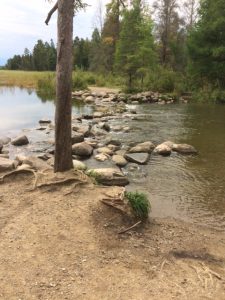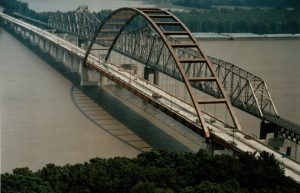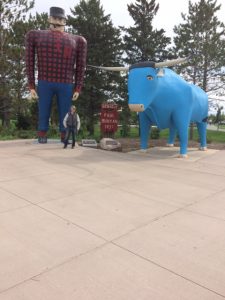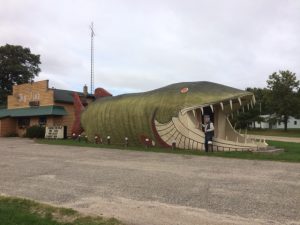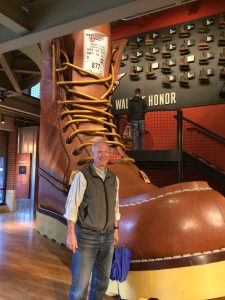From the History in the Margins Archives: You Can’t Vote Because….
If you've been hanging around here on the Margins for a while, you may have read this one before. I think it's worth repeating.
From sixth century Athens on, who has the vote and why has been a touchy and evolving subject in democracies. People who already have the vote have hesitated to extend it to others for two basic reasons. Those with the vote don't think those without the vote have the capacity to make good choices. Those with the vote fear they will lose power.
Over the centuries, people in power have come up with plenty of reasons not to extend the franchise to those who don't yet have it. Here are a few of the classics:
You can't vote because
- You're a slave
- You're a woman
- You don't own property
- You don't own enough property
- You don't practice the right religion
- You are the wrong race or ethnicity
- Your father or grandfather couldn't vote
If you're lucky enough to have the vote, use it. Because democracy is a terrible thing to waste.
Road Trip Through History: Lake Itasca State Park and the Headwaters of the Mississippi
As you know if you’ve been reading along, My Own True Love and I just drove a portion of the Great River Road. Several years ago we drove the southern leg of the road, traveling south from Memphis to the point on the Gulf where the road dead-ends in chain link fences and industrial parks and then circling back north until we reached Vicksburg. (1)
This time we headed north. We made a mad-dash on the expressway through Wisconsin and Minnesota, resolutely ignoring the siren call of sites of historical interest along the way. (2) The real adventure began when we reached Lake Itasca State Park, home of the headwaters of the Mississippi.
Itasca Lake State Park was founded in 1891 thanks to the efforts of local conservationists (3) and “developed” by Civilian Conservation Corps (CCC) workers during the Depression.
The central experience of the park is seeing the Mississippi at its source, where the river is narrow enough that we could have waded across if we had planned better and brought the right shoes. It was unexpectedly thrilling. (My personal image of the Mississippi is driving across the river at St. Louis on the Jefferson Barracks Bridge. The transition is one of the constants of my adult life: the moment in the drive home to the Ozarks when the landscape begins to look like home. Big difference.)
But there is more to the park than the river. Two visitors’ centers tell the story of the park and the land that comprises it from very different perspectives. The visitor’s center at the north entrance, nearest the headwaters, tells how the land was formed, describes how watersheds work in the landscape, and gives an overview of the flora and fauna of the region. The center at the south entrance looks at the region’s history in several different ways, including a smaller version of the natural history of the park, the “search” for the headwaters of the Mississippi, and the history of the park itself and the growth of its use as a resort.
One story in particular caught my attention: Henry Rowe Schoolcraft’s “discovery” and naming of the headwaters in 1832. (4) When Schoolcraft identified the headwaters,(5) he named the lake from which the river flowed Itasca—an odd contraction of the Latin phrase “veritas caput” (roughly translated as the true source). Not only was the name odd, it was also totally unnecessary. The lake already had a perfectly good name. The Ojibwe called the lake, Omushko, or Elk Lake, based on its shape. The French simply translated that name and called it Lac la Biche, or Elk Lake.
Like the search for the headwaters of the Nile, this was an inherently colonial project. The headwaters were not lost. The Native American peoples of the region knew where the water poured from the lake into the river. (As evidenced by the fact that Schoolcraft hired an Ojibwe guide, to lead his 30-man expedition.) So did eighteenth century European fur traders. Renaming was a way of claiming.
The story gets odder yet. Over time, Schoolcraft developed a reputation as an expert on the Ojibwe culture and language. (6) In one of his books on Ojibwe culture, he told the story, which he attributed to Ozaawindib, of a broken-hearted “Indian maiden” (a phrase that raises red flag as far as I’m concerned) named Itasca whose tears fed the headwaters of the great Mississippi. I have my doubts.
(1) Which I apparently never wrote a blog post about. Short version: It’s well worth visiting. Put it on your history nerd bucket list.
(2) Except for historical markers. We always stop for historical markers. In fact, one of the historical markers that we saw on our way north inspired a newsletter on the role of historical markers that will go out on September 26. Depending on when you’re reading this, you’re not too late to sign up. (The link is ugly, but it will get you there: http://eepurl.com/dIft-b
(3) It wasn’t a slam dunk. Logging was a powerful industry in early Minnesota and the area around Lake Itasca was prime logging country. The bill passed the Minnesota legislature by one vote.
(4) The Schoolcraft story as presented here relies not only on information from the state park but from several other historical sites that we visited. One of the delights of this trip was the way common themes appeared over the course of the week.
(5) Accompanied by a thirty-men expedition led by an Ojibwe guide named Ozaawindib. Exploration is not a one-man operation, even though one man usually gets sole credit.
(6)Due in large part to his wife, Jane Johnston, an educated woman of Ojibwe and Scots-Irish heritage who “helped” Schoolcraft collect information about the languages, history, and customs of the Native American tribes of the Great Lakes region, where he served as an agent for the Department of Indian Affairs.
_______________________________________________________________
Travelers’ tip:
If you can, plan ahead and make reservations to stay at the lodge or in one of the cabins at the state park. We stayed in one of the Four Season suites and were very impressed. Even if you don’t stay in the park, plan on a meal at the Douglas Lodge restaurant. I highly recommend the cranberry and wild rice bread.
From the History in the Margins Archives: A Little Piece of the Great River Road
My Own True Love and I are coming to the end of a week on the Great River Road. We drove north through Wisconsin and Minnesota to Lake Itasca State Park and the headwaters of the Mississippi. Since then we've been working our way south on back roads that follow, cross, and re-cross the Mississippi. We've stopped at anything that caught our imagination, including big boots and big fish, historical markers, and a cafe with a reputation for good pie.
I'm collecting stories like crazy for you, but so far I haven't had time to turn my notes into blog posts.
In the meantime, I thought you might enjoy this blog post from 2014, when we took our first stab at traveling the Great River Road.
********************************************************************
A while back, My Own True Love and I had to abandon our plans to take a three week drive down the Great River Road, which winds from Minnesota to Louisiana along the Mississippi. This last weekend we treated ourselves to four days and the brief stretch of the river that runs along the edge of Illinois from Nauvoo to Quincy. Instead of roots music, regional food, and lots of historic sites, we had a home-grown musical, a Maid-Rite sandwich, missing (or at least elusive) historical markers, and lots of Mormons.
We spent most of our time at Nauvoo, where the Mormons built a thriving community from 1839 to 1846, after being driven out of Missouri. They spent a number of years in Nauvoo before once again being driven out, this time making the trek across the plains to Utah. Today, Nauvoo is effectively a Mormon pilgrimage site.
There are two different clusters of sites commemorating the Mormon history of Nauvoo, run by two different off-shoots of Joseph Smith's original congregation. The Church of Latter Day Saints offer twenty-some reconstructed buildings and businesses with volunteer docents--the general feel is a small-scale Williamsburg with a Mormon emphasis. The surviving historical sites are in control of the Community of Christ, which broke off from the Latter Day Saints in the early 1850s .* Community of Christ volunteers give walking tours of the sites. We left knowing more about Mormon history than we knew when we arrived--and with several big unanswered questions about the relationship between the Mormons and their neighbors in both Missouri and Illinois.
A small but useful exhibit run by the local Chamber of Commerce puts the Mormon years of Nauvoo in a larger context that included a communal settlement of Icarian socialists,** immigrants who fled the 1848 revolutions in Germany, and an engineering project on the Mississippi led by then Lt. Robert E. Lee.
Some of the high points of the trip included:
• A brief ride in an oxen-drawn wagon, with a very knowledgeable guide. We were surprised to learn that oxen are simply cattle trained as draft animals. Oxen were cheaper and stronger than horses, easier to drive,** and able to feed themselves by grazing on a long trek.
• A living history program about making bricks.
• Driving on a county road along the Mississippi early on a beautiful Sunday morning
• The Villa Katherine in Quincy Illinois: a home built in the Moorish style in 1900 by a man who can most politely be described as an enthusiast.
We've got lots of River Road left to travel.
*One of the sources of disagreement was over who was Joseph Smith's legitimate successor after his murder. The splinter group who became the Community of Christ believed that Smith had anointed his eleven-year-old Joseph Smith III as his successor and were prepared to wait until he had grown old enough to take his rightful place. This reminded me of the Sunni/Shia split over Mohammed's successor. Déjà vu all over again?
**Worth a blog post of their own. Coming soon to a history blog near you. [NOTE: Still no blog post on the Icarians. So many stories, so little time.]
***As long as they'd been trained to yoke. If you were desperate and hooked an untrained pair of cattle to a yoke, you were asking for trouble.
![[Suffragists in parade] (LOC)](http://farm4.staticflickr.com/3033/3313669287_b8229543b5.jpg)
